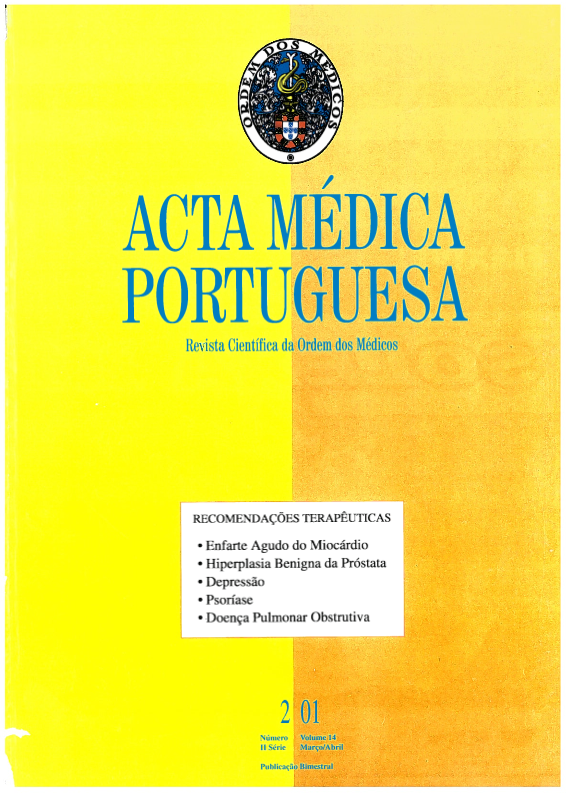Psoríase.
DOI:
https://doi.org/10.20344/amp.1837Resumo
The purpose of these Guidelines is to summarize the most relevant features of the pathogenesis, clinical presentation and treatment of psoriasis. Patient education should include the deleterious effects that some drugs, trauma, alcohol, infection and stress may have on psoriasis; the beneficial action of careful sunlight exposure should also be emphasized. Topical treatment--emollients, keratolytics, coal tar preparations, anthralin, corticosteroids, calcipotriol--is essential for the control of plaque-type psoriasis and is also an important adjuvant therapy in more severe cases; the relative strength and the potential adverse effects of topical steroids are also referred. UV therapy (phototherapy and photochemotherapy) is recommended for psoriasis with generalized plaque, guttate or palmoplantar psoriasis refractory to topical therapies. Systemic therapy--retinoids, methotrexate, cyclosporine--is limited to severe plaque psoriasis unresponsive to topical or UV therapy, erythrodermic, pustular or arthropatic psoriasis. Combination and rotational therapies are likely to reduce the risks of each individual therapy and should be encouraged. Finally, a few diagrams are included, pointing out the scientific validity of the therapies currently available to help clinicians to optimize their management of psoriasis.Downloads
Downloads
Como Citar
Edição
Secção
Licença
Todos os artigos publicados na AMP são de acesso aberto e cumprem os requisitos das agências de financiamento ou instituições académicas. Relativamente à utilização por terceiros a AMP rege-se pelos termos da licença Creative Commons ‘Atribuição – Uso Não-Comercial – (CC-BY-NC)’.
É da responsabilidade do autor obter permissão para reproduzir figuras, tabelas, etc., de outras publicações. Após a aceitação de um artigo, os autores serão convidados a preencher uma “Declaração de Responsabilidade Autoral e Partilha de Direitos de Autor “(http://www.actamedicaportuguesa.com/info/AMP-NormasPublicacao.pdf) e a “Declaração de Potenciais Conflitos de Interesse” (http://www.icmje.org/conflicts-of-interest) do ICMJE. Será enviado um e-mail ao autor correspondente, confirmando a receção do manuscrito.
Após a publicação, os autores ficam autorizados a disponibilizar os seus artigos em repositórios das suas instituições de origem, desde que mencionem sempre onde foram publicados e de acordo com a licença Creative Commons









